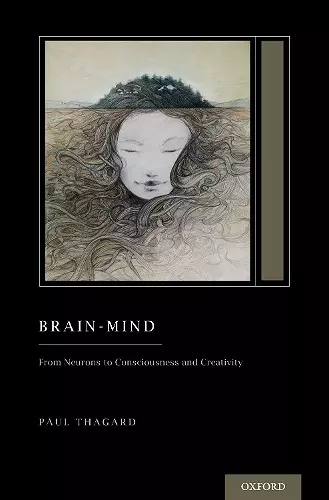Brain-Mind
From Neurons to Consciousness and Creativity
Format:Hardback
Publisher:Oxford University Press Inc
Published:21st Mar '19
Currently unavailable, and unfortunately no date known when it will be back
This hardback is available in another edition too:
- Paperback£30.99(9780197618592)

How do brains make minds? Paul Thagard presents a unified, brain-based theory of cognition and emotion with applications to the most complex kinds of thinking, right up to consciousness and creativity. Neural mechanisms are used to explain mental operations for analogy, action, intention, language, and the self. Brain-Mind develops a brilliant account of mental operations using promising new ideas from theoretical neuroscience. Single neurons cannot do much by themselves, but groups of neurons work together to accomplish powerful kinds of mental representation, including concepts, images, and rules. Minds enable people to perceive, imagine, solve problems, understand, learn, speak, reason, create, and be emotional and conscious. Competing explanations of how the mind works have identified it as soul, computer, brain, dynamical system, or social construction. This book explains minds in terms of interacting mechanisms operating at multiple levels, including the social, mental, neural, and molecular. Unification comes from systematic application of Chris Eliasmith's powerful Semantic Pointer Architecture, a highly original synthesis of neural network and symbolic ideas about how the mind works. This book belongs to a trio that includes Mind-Society: From Brains to Social Sciences and Professions and Natural Philosophy: From Social Brains to Knowledge, Reality, Morality, and Beauty. They can be read independently, but together they make up a Treatise on Mind and Society that provides a unified and comprehensive treatment of the cognitive sciences, social sciences, professions, and humanities.
A readable overview of the philosophy of cognitive science and its goal of establishing mechanistic or computational models of cognition and emotion * Choice *
With his deep background in cognitive science and philosophy of mind, Thagard is able to sketch a bird's eye view of the mindencompassing cognition, emotion, and consciousnesswhile staying grounded in a computational theory of neural organization. * Keith J. Holyoak, Distinguished Professor of Psychology, University of California, Los Angeles *
Paul Thagard's Brain-Mind is an extremely ambitious attempt (largely successful, I believe), to provide a unified, neurally-based, account of how the Brain creates the Mind. Using Chris Eliasmith's Semantic Pointer Architecture and related ideas, Thagard shows how all the various aspects of the mind from lower level phenomena, such as Perception, to the highest levels of cognition, such as Language and the Self, can be realized in terms of a set of unifying principles based on the Semantic Pointer Architecture and its grounding in neural mechanisms. It provides a strong intellectual foundation for the even more ambitious other volumes (Mind-Society and Natural Philosophy) of his three-volume Treatise on Mind and Society.Thagard takes us on a mind-expanding journey. * Stephen Read, Mendel B. Silberberg Professor of Social Psychology, University of Southern California *
ISBN: 9780190678715
Dimensions: 157mm x 239mm x 28mm
Weight: 658g
336 pages